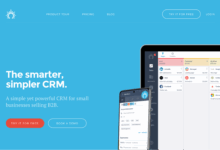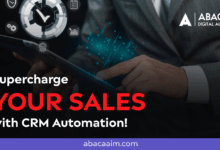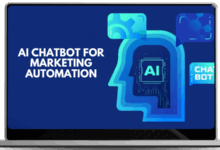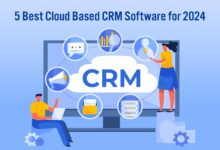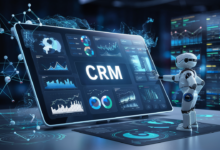Best Enterprise CRM Solutions
Best Enterprise CRM Solutions are crucial for modern businesses seeking to optimize customer relationships and streamline operations. This exploration delves into the key features, functionalities, and considerations for selecting the ideal enterprise CRM, covering deployment models, scalability, security, implementation, and return on investment. We’ll examine leading solutions, highlighting their strengths and weaknesses to aid in informed decision-making.
From advanced automation and seamless integrations to robust reporting and analytics, the right CRM empowers businesses to manage customer interactions effectively, fostering growth and enhancing overall efficiency. Understanding the nuances of scalability, customization, and security is paramount, ensuring the chosen solution aligns with long-term business objectives and data protection needs. This guide provides a comprehensive overview, enabling businesses to navigate the complexities of enterprise CRM selection with confidence.
Defining “Best” Enterprise CRM Solutions
Selecting the optimal Enterprise CRM solution requires careful consideration of various factors beyond mere feature lists. The “best” solution is highly dependent on the specific needs and context of the organization, encompassing its size, industry, existing infrastructure, and strategic goals. A solution deemed “best” for one company may be entirely unsuitable for another.
Criteria for Evaluating Enterprise CRM Effectiveness
Effective evaluation necessitates a multi-faceted approach. Key criteria include functionality alignment with business processes, scalability to accommodate growth, robust security features to protect sensitive data, ease of integration with existing systems, user-friendliness to ensure adoption, reliable technical support, and a clear return on investment (ROI). A comprehensive assessment should analyze these aspects holistically, weighing their relative importance based on the organization’s priorities. For example, a rapidly expanding startup might prioritize scalability above all else, while a highly regulated financial institution would place a premium on security.
Key Features Differentiating Top-Tier Solutions
Leading enterprise CRM solutions transcend basic contact management. They offer advanced capabilities such as comprehensive sales force automation (SFA), robust marketing automation tools, advanced analytics and reporting dashboards providing actionable insights, integrated customer service modules for efficient case management, and seamless omnichannel integration to unify customer interactions across various touchpoints. Furthermore, robust API integrations facilitate connection with other business applications, fostering a unified and efficient workflow. Artificial intelligence (AI)-powered features, like predictive lead scoring and intelligent chatbots, are increasingly becoming standard in top-tier offerings, enhancing efficiency and personalization.
Comparison of Deployment Models
Three primary deployment models exist: cloud, on-premise, and hybrid. Cloud-based CRM solutions offer scalability, accessibility, and reduced upfront costs, making them attractive to many businesses. However, they may present concerns regarding data security and vendor lock-in. On-premise solutions offer greater control over data and customization but require significant upfront investment in infrastructure and ongoing maintenance. Hybrid models combine aspects of both, offering flexibility and control while leveraging the scalability of the cloud for specific functionalities. The optimal choice depends on factors like budget, IT expertise, security requirements, and desired level of control.
Comparison of Leading Enterprise CRM Solutions
| CRM Solution | Strengths | Weaknesses | Deployment Models |
|---|---|---|---|
| Salesforce Sales Cloud | Extensive features, robust ecosystem of apps, high scalability, strong market presence | Can be complex and expensive, steep learning curve, potential vendor lock-in | Cloud, Hybrid |
| Microsoft Dynamics 365 | Seamless integration with other Microsoft products, strong customization options, relatively user-friendly | Can be expensive, may require significant IT expertise for complex implementations | Cloud, On-Premise, Hybrid |
| SAP CRM | Strong integration with other SAP enterprise applications, suitable for large, complex organizations | High cost, complex implementation, steep learning curve | Cloud, On-Premise, Hybrid |
| Oracle Siebel CRM | Highly customizable, robust features for large enterprises, strong industry-specific solutions | High cost, complex implementation, limited mobile capabilities compared to competitors | On-Premise, Cloud |
Functionality and Features of Leading Enterprise CRMs
Enterprise CRM solutions go far beyond basic contact management. Leading platforms offer a sophisticated suite of functionalities designed to optimize sales, marketing, and customer service processes, ultimately driving revenue growth and improving customer relationships. This section will delve into the key features that distinguish top-tier enterprise CRMs.
Advanced Automation Capabilities
Advanced automation is a cornerstone of modern enterprise CRMs. These capabilities significantly reduce manual tasks, freeing up valuable employee time for more strategic initiatives. For example, Salesforce’s Einstein AI uses machine learning to predict which leads are most likely to convert, automatically prioritizing them for sales representatives. Similarly, Microsoft Dynamics 365 offers robust workflow automation, enabling the creation of automated processes for tasks such as lead qualification, opportunity management, and customer onboarding. These automated workflows can include features like automated email sequences, triggered based on specific customer actions or milestones, ensuring consistent and timely communication. Another example is the automated routing of support tickets based on predefined criteria like product category or urgency level, improving response times and customer satisfaction.
Integration Capabilities with Other Business Software
Seamless integration with other business applications is crucial for a holistic view of customer interactions and operational efficiency. Leading enterprise CRMs like Salesforce, SAP CRM, and Oracle Siebel offer robust APIs and pre-built integrations with popular tools such as marketing automation platforms (Marketo, HubSpot), ERP systems (SAP, Oracle), and analytics dashboards (Tableau, Power BI). This interconnectedness allows for data synchronization across different systems, eliminating data silos and providing a single source of truth for customer information. For instance, integrating a CRM with an e-commerce platform allows for real-time tracking of customer purchases and interactions, providing valuable insights for personalized marketing campaigns and improved customer service.
Reporting and Analytics Features
Comprehensive reporting and analytics capabilities are essential for gaining actionable insights from customer data. Top enterprise CRMs provide advanced reporting tools that allow businesses to track key performance indicators (KPIs), analyze sales trends, and identify areas for improvement. For example, Salesforce’s reporting and dashboard features allow users to create custom reports and dashboards, visualizing data in various formats, such as charts, graphs, and tables. These tools can track metrics such as sales conversion rates, customer churn, and customer lifetime value. Furthermore, predictive analytics features, often powered by AI, can forecast future trends and identify potential risks or opportunities. Microsoft Dynamics 365 offers similar functionalities, providing customizable dashboards and reports, enabling businesses to monitor sales performance, customer satisfaction, and marketing campaign effectiveness.
Hypothetical Workflow: Streamlining Sales Lead Qualification
Consider a sales team using Salesforce’s lead scoring functionality. A new lead enters the system through a website form. Salesforce’s Einstein AI automatically assesses the lead based on predefined criteria such as company size, industry, and website activity. The lead is assigned a score reflecting its likelihood of conversion. Leads scoring above a certain threshold are automatically routed to a designated sales representative, while lower-scoring leads are placed in a nurture campaign for further qualification. This automated process eliminates manual lead sorting, ensuring that sales representatives focus their efforts on high-potential leads, improving sales efficiency and conversion rates. This workflow highlights how a specific CRM feature (lead scoring and automation) streamlines a key business process (lead qualification).
Scalability and Customization in Enterprise CRM Systems
Choosing the right enterprise CRM involves careful consideration of its ability to grow with your business and adapt to your unique needs. Scalability and customization are crucial factors determining a CRM’s long-term value and effectiveness. A system that can’t handle increased data volume or evolving business processes will quickly become a bottleneck, hindering growth and efficiency. Similarly, a rigid, inflexible system will struggle to meet the specific requirements of your organization, leading to frustration and underutilization.
Factors Influencing Enterprise CRM Scalability
Several key factors determine how well an enterprise CRM scales. Database capacity, server infrastructure, and the CRM’s inherent architecture all play significant roles. A cloud-based CRM, for instance, generally offers superior scalability compared to an on-premise solution due to the inherent flexibility and readily available resources of the cloud infrastructure. Furthermore, the CRM’s ability to handle concurrent users and large data sets without performance degradation is a critical aspect of scalability. Efficient data processing and optimized code are essential for maintaining performance as the system grows. Finally, the CRM vendor’s ability to provide support and resources for scaling is also a critical factor.
Examples of CRMs with Robust Customization Options
Many leading enterprise CRMs offer extensive customization capabilities. Salesforce, for example, provides a powerful platform with its AppExchange, allowing businesses to integrate pre-built apps and customize workflows to fit specific needs. Salesforce also offers extensive API access, enabling developers to create custom applications and integrations. Microsoft Dynamics 365 offers a similar level of customization through its extensive configuration options and extensibility features, allowing businesses to tailor the system to their unique business processes. Similarly, Oracle Siebel CRM, while a more mature platform, still offers robust customization options through its configuration tools and APIs. These options allow for significant tailoring to specific business needs, ensuring the CRM aligns with the organization’s workflows and data structures.
Cost Comparisons of Scaling Different Enterprise CRM Platforms
The cost of scaling different enterprise CRM platforms varies significantly depending on several factors. These include the initial licensing costs, the pricing model (subscription vs. perpetual license), the level of customization required, and the ongoing maintenance and support costs. Cloud-based solutions typically involve subscription fees that scale with usage, offering greater flexibility but potentially higher costs in the long run for significant growth. On-premise solutions may have lower initial costs but require significant upfront investment in infrastructure and ongoing maintenance, potentially leading to higher total costs of ownership, especially as the system scales. For example, migrating from a smaller Salesforce Sales Cloud subscription to a larger Enterprise Edition with additional users and features will result in a predictable increase in monthly subscription costs. In contrast, scaling an on-premise CRM might necessitate purchasing additional hardware, software licenses, and potentially hiring additional IT staff, making cost prediction more complex.
Key Considerations for Choosing a Scalable and Customizable CRM Solution
Selecting a scalable and customizable CRM requires a thorough evaluation of your business needs and long-term goals. Consider the following:
- Projected Growth: Estimate your anticipated growth in terms of users, data volume, and transaction volume over the next 3-5 years.
- Customization Needs: Assess the extent to which you need to customize the CRM to align with your specific business processes and workflows.
- Integration Requirements: Determine which other systems the CRM needs to integrate with (e.g., ERP, marketing automation).
- Budget: Establish a clear budget that encompasses initial licensing costs, implementation costs, customization costs, and ongoing maintenance and support costs.
- Vendor Support: Evaluate the vendor’s track record in providing support and resources for scaling and customization.
By carefully considering these factors, businesses can select a CRM solution that effectively supports their current needs and scales to meet their future growth aspirations.
Security and Data Management in Enterprise CRM
Enterprise CRM systems hold vast amounts of sensitive data, making robust security and data management paramount. Effective strategies are crucial not only for protecting business interests but also for maintaining customer trust and complying with increasingly stringent regulations. This section explores the key aspects of security and data management within leading enterprise CRM solutions.
Security Protocols Implemented in Leading Enterprise CRMs
Leading enterprise CRM vendors employ a multi-layered security approach. This typically includes robust authentication mechanisms like multi-factor authentication (MFA), access controls based on roles and permissions, and encryption both in transit (using HTTPS) and at rest (for data stored in databases). Regular security audits and penetration testing are also common practices to identify and address vulnerabilities proactively. Furthermore, many systems integrate with existing enterprise security infrastructure, such as single sign-on (SSO) solutions and security information and event management (SIEM) systems, for a holistic security posture. Examples include Salesforce’s Shield Platform Encryption and Microsoft Dynamics 365’s advanced security features.
Data Privacy Considerations and Compliance Requirements
Data privacy is a critical concern, particularly with the rise of regulations like GDPR (General Data Protection Regulation) and CCPA (California Consumer Privacy Act). Enterprise CRMs must adhere to these regulations, which often mandate data minimization, user consent management, and data subject access requests. Leading CRM systems offer features to support compliance, such as data masking, consent tracking, and tools to facilitate data subject requests. These systems also frequently undergo regular audits to ensure ongoing compliance with evolving regulations. Failure to comply can result in significant financial penalties and reputational damage.
Data Backups and Disaster Recovery
Data loss can be catastrophic for a business. Therefore, robust data backup and disaster recovery (DR) strategies are essential. Enterprise CRMs typically offer options for automated backups, both on-premises and in the cloud. DR plans often involve redundant systems and data centers, ensuring business continuity in case of unforeseen events like natural disasters or cyberattacks. These plans might incorporate features like high availability, data replication, and failover mechanisms to minimize downtime and data loss. The specific implementation varies depending on the CRM system and the organization’s specific needs and risk tolerance. For example, some systems offer point-in-time recovery, allowing restoration to a specific point in time before a data loss event.
Security Features of Leading CRM Solutions
| CRM Solution | Authentication & Access Control | Data Encryption | Compliance & Privacy |
|---|---|---|---|
| Salesforce | MFA, Role-Based Access Control, SSO | Shield Platform Encryption, Data Loss Prevention (DLP) | GDPR, CCPA, HIPAA compliance features |
| Microsoft Dynamics 365 | MFA, Role-Based Security, Azure Active Directory Integration | Data encryption at rest and in transit, Azure Information Protection | GDPR, CCPA, HIPAA compliance features |
| Oracle Siebel CRM | MFA, Role-Based Security, Secure Web Gateway | Database encryption, transport layer security (TLS) | Supports various industry-specific compliance standards |
| SAP CRM | MFA, Role-Based Authorization, User Provisioning | End-to-end encryption, data masking | GDPR, CCPA, and other relevant compliance certifications |
Implementation and Support for Enterprise CRM Solutions
Successfully implementing an enterprise CRM system is a complex undertaking requiring careful planning, execution, and ongoing support. The process demands a strategic approach, encompassing various stages and considerations to ensure a smooth transition and maximize return on investment. Understanding the typical stages, available support options, and potential challenges is crucial for a successful deployment.
Stages of Enterprise CRM Implementation
Implementing an enterprise CRM system typically involves several key phases. These stages are iterative and often overlap, requiring continuous communication and collaboration between the vendor, internal IT teams, and end-users. A well-defined project plan with clear milestones and responsibilities is essential for efficient execution.
- Planning and Requirements Gathering: This initial phase involves defining project goals, identifying key stakeholders, and conducting a thorough assessment of current business processes and needs. This includes determining the scope of the CRM implementation, data migration strategies, and integration requirements with existing systems.
- System Selection and Customization: Once requirements are defined, the appropriate CRM system is selected based on factors like scalability, functionality, and budget. This phase may involve customizing the chosen CRM to align with specific business processes and workflows.
- Data Migration and Integration: Existing customer data from various sources is migrated to the new CRM system. This process often requires data cleansing, transformation, and validation to ensure data accuracy and consistency. Integration with other enterprise systems (e.g., ERP, marketing automation) is also critical during this phase.
- Testing and Training: Thorough testing is crucial to identify and resolve any bugs or issues before the system goes live. Comprehensive user training is equally important to ensure users can effectively utilize the new system and its features.
- Deployment and Go-Live: This phase involves launching the CRM system across the organization. A phased rollout approach, starting with pilot groups, can help mitigate risks and identify any unforeseen issues.
- Post-Implementation Support and Optimization: Ongoing support is essential to address any technical issues, provide user assistance, and continuously optimize the system’s performance and effectiveness. Regular system updates and enhancements are also part of this phase.
Types of CRM Vendor Support
Major CRM vendors offer various support options tailored to different customer needs and budgets. These options typically range from basic email and phone support to comprehensive managed services.
- Basic Support: This often includes access to online help resources, email support, and phone support during business hours. It is typically included in the standard licensing agreement.
- Premium Support: This level of support offers faster response times, extended support hours, and potentially dedicated support representatives. It usually comes at an additional cost.
- Managed Services: This comprehensive support option includes proactive monitoring, system maintenance, and ongoing optimization of the CRM system. It often involves a dedicated team of experts from the vendor.
Examples of Successful and Challenging CRM Implementations
Salesforce’s implementation at Adidas is often cited as a successful example, resulting in improved sales processes and customer relationship management. However, even successful implementations can face challenges. For instance, a large-scale CRM deployment at a global corporation might encounter difficulties integrating legacy systems, ensuring data consistency across multiple regions, or managing user adoption across a geographically dispersed workforce. Conversely, a poorly planned implementation, lacking sufficient user training and change management, could lead to low adoption rates and ultimately fail to deliver expected benefits.
Checklist for Evaluating CRM Vendor Implementation and Support
Before selecting a CRM vendor, it is crucial to evaluate their implementation and support capabilities. The following checklist can help in this process.
| Criteria | Evaluation Points |
|---|---|
| Implementation Methodology | Clearly defined stages, project management approach, and experience with similar implementations. |
| Data Migration Strategy | Detailed plan for data migration, cleansing, and validation, including timelines and contingency plans. |
| Training and Support | Comprehensive training programs, various support channels (phone, email, online resources), and service level agreements (SLAs). |
| Integration Capabilities | Ability to integrate with existing systems (ERP, marketing automation, etc.) and demonstrated experience in such integrations. |
| Post-Implementation Support | Ongoing maintenance, system updates, and ongoing optimization services offered. |
| Vendor Reputation and References | Check vendor reviews, case studies, and request references from existing clients. |
Cost and Return on Investment (ROI) of Enterprise CRM
Implementing an enterprise CRM system represents a significant investment, demanding careful consideration of both upfront and ongoing costs to ensure a positive return. Understanding the various cost components and developing a robust ROI calculation is crucial for justifying the expenditure and maximizing the system’s value.
Cost Components of Enterprise CRM Solutions
The total cost of ownership (TCO) for an enterprise CRM solution encompasses several key areas. These costs can vary significantly depending on the chosen vendor, the size of the organization, the complexity of the implementation, and the level of customization required. Ignoring any of these factors can lead to inaccurate budgeting and potentially jeopardize the project’s success.
- Software Licensing Fees: This includes the initial purchase price of the software licenses, which can vary depending on the number of users and modules required. Recurring annual subscription fees are also common.
- Implementation Costs: This involves the cost of consultants, project managers, and internal staff time dedicated to configuring, customizing, and integrating the CRM system with existing systems. Data migration from legacy systems can also contribute significantly to these costs.
- Hardware and Infrastructure Costs: Depending on the chosen deployment model (cloud-based or on-premise), costs may include server hardware, network infrastructure, and data storage. Cloud-based solutions generally shift these costs to the vendor, but they still need to be factored into the overall budget.
- Training Costs: Effective CRM utilization necessitates comprehensive training for all users. This includes costs associated with training materials, instructor fees, and employee time spent on training.
- Maintenance and Support Costs: Ongoing maintenance, technical support, and software updates are essential to ensure the system’s optimal performance and security. These costs can be significant over the lifetime of the CRM system.
- Customization and Integration Costs: If significant customization or integration with other business systems is needed, this can add substantially to the overall cost. This includes development work to tailor the CRM to specific business processes and integrate it with existing applications.
Calculating the ROI of Enterprise CRM Implementation
A comprehensive ROI calculation for an enterprise CRM implementation should consider both tangible and intangible benefits. Tangible benefits are easily quantifiable, such as increased sales, reduced operational costs, and improved customer satisfaction. Intangible benefits, such as improved brand reputation and enhanced employee morale, are more challenging to quantify but are still valuable. A common approach involves comparing the total cost of ownership (TCO) with the projected return from the benefits over a specific period.
ROI = (Total Benefits – Total Costs) / Total Costs
Long-Term Benefits and Cost Savings of CRM
Long-term benefits of CRM extend beyond immediate financial gains. Improved customer relationship management leads to increased customer loyalty, higher customer lifetime value, and reduced customer churn. Streamlined business processes result in increased efficiency and productivity, leading to reduced operational costs. Data-driven insights facilitate better decision-making, leading to more effective marketing campaigns and improved sales strategies.
Hypothetical ROI Scenario
Let’s consider a hypothetical scenario for a mid-sized company, “Acme Corp,” implementing a CRM system. Acme Corp currently has 100 sales representatives, each spending an average of 2 hours per week on administrative tasks related to customer data management. Implementing a CRM system could reduce this time by 50%, saving 10 hours per week per representative, or 500 hours per week for the entire sales team. Assuming an average hourly cost of $50 for sales representatives, this translates to a weekly cost saving of $25,000, or $1,300,000 annually. The total cost of implementing the CRM system (including software, implementation, training, and maintenance) is estimated at $500,000 over three years. In this scenario, the cost savings alone would exceed the implementation costs within two years, demonstrating a strong positive ROI.
Future Trends in Enterprise CRM
The enterprise CRM landscape is constantly evolving, driven by technological advancements and shifting customer expectations. Understanding these emerging trends is crucial for businesses seeking to optimize their CRM strategies and maintain a competitive edge. This section will explore key future directions in enterprise CRM, focusing on the impact of AI and ML, the central role of CRM in customer experience management, and examples of innovative solutions leveraging these technologies.
The Expanding Influence of Artificial Intelligence and Machine Learning
AI and ML are rapidly transforming enterprise CRM, moving beyond simple automation to deliver predictive insights and personalized experiences. Machine learning algorithms analyze vast datasets of customer interactions, identifying patterns and predicting future behavior. This allows for proactive customer service, targeted marketing campaigns, and improved sales forecasting. For example, AI-powered chatbots can handle routine customer inquiries, freeing up human agents to focus on more complex issues. Predictive analytics can identify customers at risk of churn, allowing businesses to intervene with retention strategies. Furthermore, ML algorithms can personalize the customer journey by recommending relevant products or services based on individual preferences and past interactions. This level of personalization enhances customer satisfaction and drives sales.
CRM’s Pivotal Role in Customer Experience Management
Modern CRM systems are no longer just about managing customer data; they are integral to delivering exceptional customer experiences. A holistic CRM strategy integrates data from various touchpoints – website interactions, social media engagement, email communications, and customer service interactions – to create a unified view of the customer. This 360-degree view empowers businesses to understand customer needs and preferences better, tailoring interactions to individual requirements. Effective CRM enables personalized communication, proactive support, and seamless transitions between different channels. Companies that prioritize customer experience through their CRM strategies tend to see higher customer loyalty, increased retention rates, and improved brand reputation. For instance, a company might use CRM data to identify customers who have recently experienced a negative interaction and proactively reach out to offer assistance or compensation, thereby mitigating potential damage to the customer relationship.
Innovative CRM Solutions Leveraging Emerging Technologies
Several innovative CRM solutions are already leveraging emerging technologies to enhance functionality and deliver superior customer experiences. One example is the integration of augmented reality (AR) into CRM platforms. AR can provide sales representatives with real-time information about customers during sales calls or site visits, enhancing their ability to personalize interactions and close deals. Another example is the use of blockchain technology to enhance data security and transparency in CRM systems. Blockchain can create a secure, immutable record of customer interactions, improving data integrity and reducing the risk of fraud. Finally, the convergence of CRM with Internet of Things (IoT) data is creating new opportunities for personalized service and predictive maintenance. For instance, a company selling appliances could use IoT data from the appliances to predict potential malfunctions and proactively contact customers to schedule maintenance, improving customer satisfaction and reducing the risk of costly repairs.
Conclusive Thoughts
Ultimately, the selection of the best enterprise CRM solution hinges on a careful assessment of individual business needs, considering factors such as scalability, security, budget, and long-term growth strategies. By understanding the various functionalities, deployment options, and potential ROI, organizations can make informed decisions that lead to improved customer relationships, increased operational efficiency, and ultimately, a stronger bottom line. Choosing the right partner for implementation and support is equally critical for a successful and sustainable CRM journey.
